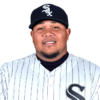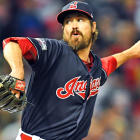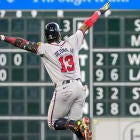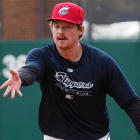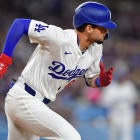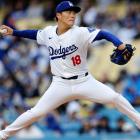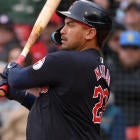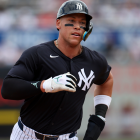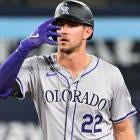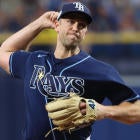Generally speaking, the only relief pitchers worth owning in Fantasy are the ones in line for saves.
But there can be only 30 of those at any one time, so if you play in a deep enough league, you may well have to dip into that next unspoken layer.
I’m talking setup men and middle relievers, those roles where the chasm between Fantasy and real-life value couldn’t be wider.
Of course, even if the relievers in those roles matter in your league, they’re still concessionary. You’d rather have the closer. But when you have no other choice, where should turn?
Too many leagues rely on non-closing relievers for the best to remain unspoken, so I’m speaking up, ready to reveal 12 of the best true non-closers.
That’s even deeper than it sounds because I’ve omitted the relievers still in the running for saves for these teams:
- Padres (Brandon Maurer and Carter Capps)
- Phillies (Jeanmar Gomez, Joaquin Benoit and Hector Neris)
- Rockies (Greg Holland and Adam Ottavino)
- Nationals (Shawn Kelley, Koda Glover and Blake Treinen)
- Athletics (Ryan Madson, Santiago Casilla, Sean Doolittle and Ryan Dull)
- Reds (Raisel Iglesias, Michael Lorenzen and Drew Storen)
You’ve heard enough about them already, and it goes without saying that a pitcher who narrowly loses the closer gig still has value in leagues where saves are scarce. In fact, potential for saves might be the single most important quality for a non-closing reliever.
But it’s not the only one. Some leagues reward holds, of course, and a reliever who excels in ERA and WHIP is usable just for that, at least in categories leagues.
Weighing everything they bring to the table, here are my top 12 non-closers for 2017:
These first two aren’t exactly slipping under the radar. Andrew Miller is already a big deal in Fantasy because, inning for inning, he might be the best pitcher in baseball. And apart from ERA and WHIP help, he’ll sprinkle in some wins and saves because he’s so flexible, working a multi-inning stint in one game and being preserved for the ninth inning in another.
Dellin Betances is like Miller’s right-handed twin and, thus, is normally drafted in Rotisserie leagues. His ERA and WHIP took a hit because of his ill-fated stint as a closer late last year, which is partly why the Yankees went out and signed Aroldis Chapman this offseason. You shouldn’t expect many saves from Betances, as reliable as Chapman is, but he has led all relievers in strikeouts three straight years.
Addison Reed didn’t give the White Sox the top-shelf closer they thought were drafting in 2010, and now that Dan Warthen has unlocked his potential two teams later, he has no claim to the role. But that could change, albeit temporarily, if and when Jeurys Familia is suspended for an offseason domestic incident. Reed’s 40 holds put him in a class of his own atop the leaderboard last year, so there may not be a more secure setup man in the game today.
Here he is: The first of the non-closers who you may not have already given a second thought to drafting. Or maybe you have. It’s no secret David Robertson is probably next out the door for the White Sox, and it’s no secret Nate Jones would be the one to replace him. And judging by his other numbers, he wouldn’t be the worst choice to supplement your pitching staff until then.
Of all the relievers in the Rangers bullpen, Matt Bush comes the closest to the closer phenotype -- meaning a hard fastball, swing-and-miss breaking ball and plus control. But by the time he entered the picture last year, Sam Dyson, who’s more of a pitch-to-contact ground-ball specialist, was already entrenched. That phenotype is what it is for a reason, though.
Dyson’s profile makes him susceptible to the kind of unlucky stretch that might open the door for Bush.
Kyle Barraclough, whose name is indeed pronounced like the delicious pastry, may not be the backup option for saves in Miami and may not even be the third option with Brad Ziegler and Junichi Tazawa both in the mix. But darn it, he should be, and when it comes to bullpen roles, the cream tends to rise. Barraclough’s 29 holds last year were second only to Reed’s 40, and his 113 strikeouts ranked behind only Betances and Miller. If his control clicks, watch out.
Brad Brach earned an All-Star nod for the Orioles last year, and in doing so, he overtook side-arming Darren O’Day as the backup option for saves. But he’s backing up Zach Britton, who may well be the top closer in the game. No closer is impervious to injury, though, and Britton has battled oblique discomfort this spring. The best fill-in closers are the ones who would actually make for good closers if given the opportunity.
Luke Gregerson was one of three Astros relievers to record a dozen or more saves last year and got a full season of closing experience the year before that, so he would probably take the reins if Ken Giles stumbles out of the gate again. He’s not the most conventional choice as a ground-ball specialist with a fastball that barely scratches 90, but he showed he’s capable of missing bats last year and has a steady eight-year track record.
Wade Davis is the Cubs’ intended closer for 2017, but they were able to get him at a discount because he missed so much of last year with a forearm strain -- an injury that’s often a precursor to elbow problems. So you understand why his backup might be of some interest, and this backup just so happened to do a bang-up job as a closer for the 2 1/2 years before Aroldis Chapman came aboard last July. Hector Rondon’s backup status is less than clear-cut, though, with Koji Uehara and Carl Edwards in the mix.
Daniel Hudson’s numbers would suggest he has no business going anywhere near the ninth inning, but the normally thrifty Pirates agreed to pay him $5.5 million each of the next two years for a reason. And here it is: Over his first 30 appearances last year, he had a 1.55 ERA. Over his next 15 appearances, he had a 24.21 ERA (to go with an outrageous .625 BABIP). Over his final 27 appearances, he had a 2.70 ERA. He may well be the most talented pitcher in the Pirates bullpen, and Tony Watson has looked vulnerable this spring.
Bruce Rondon’s triple-digit fastball put him at the forefront of the Tigers’ closer competition as a 22-year-old rookie in 2013, but since then, his career has been mostly defined by injuries, wildness and his 2015 dismissal for “effort issues.” But he lost weight, tweaked his mechanics and looked every bit like a closer-in-waiting after a midseason call-up last year, putting the 35-year-old Francisco Rodriguez on notice.
The 39th overall pick by the Tigers in 2013, Corey Knebel is one of those relievers who was drafted to close, and now, two organizations later, he has his clearest path to the role. The Brewers did sign Neftali Feliz as a stopgap this offseason, but he had some concerning peripherals last year and is likely just trade bait in the long run. Knebel still has some command issues to sort out, but sooner or later the stuff that has delivered him a 10.5 strikeout-per-nine-inning ratio across three seasons should win out.
























